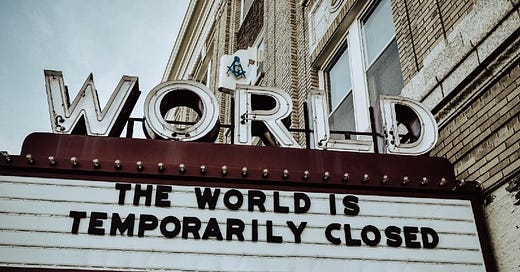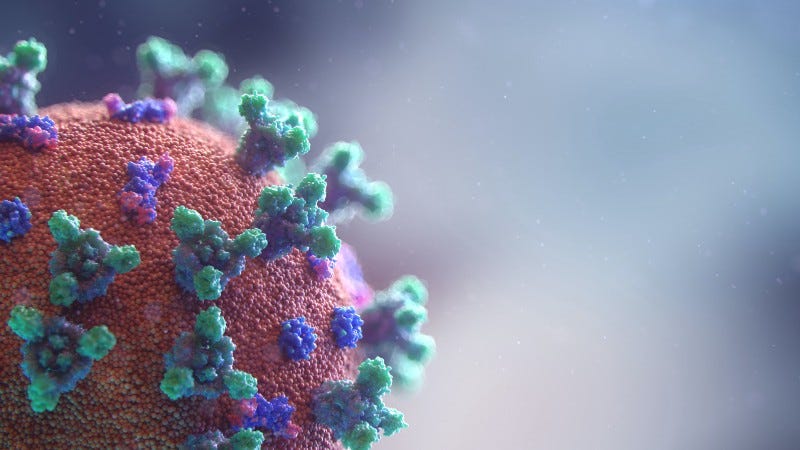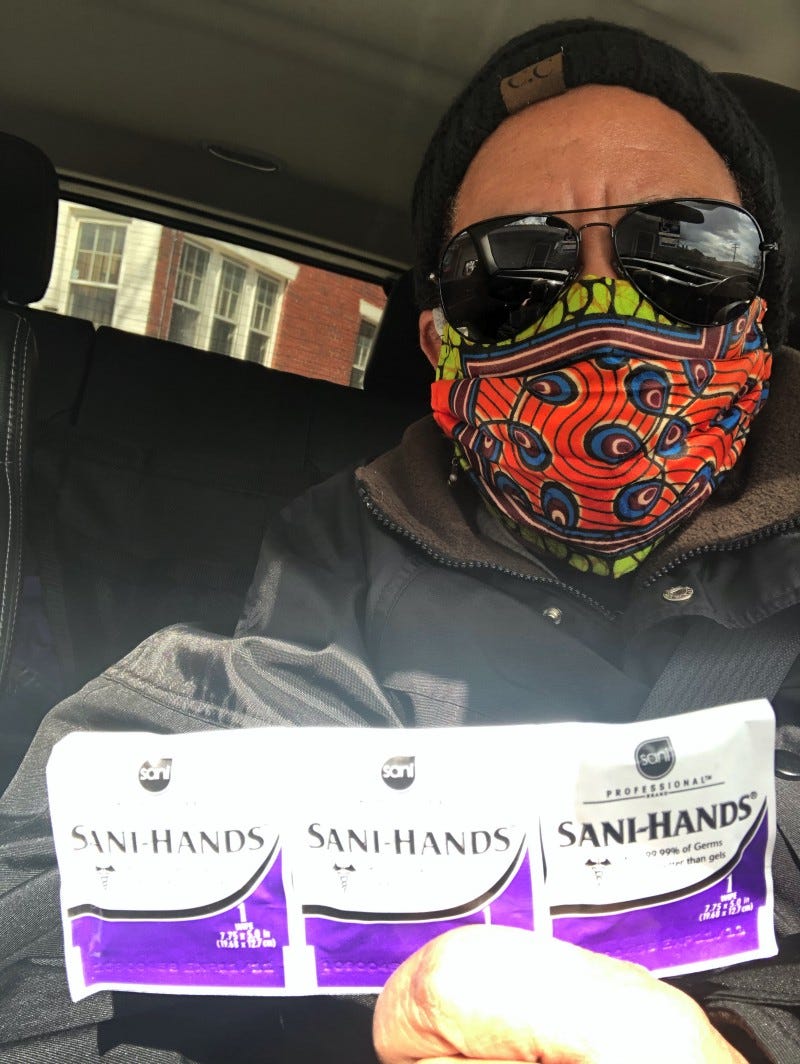How I am Experiencing the COVID-19 Pandemic
Photo Credit: Edwin Hooper on Unsplash
It’s here. It’s with us now. It has been here for a while. It will be here for the foreseeable future. It has changed our lives and shaken our sense of security. It hasn’t been this bad for over one hundred years. “It” is the novel coronavirus that causes the devastating and often fatal disease, COVID-19. COVID-19 has caused us to make many large and small changes to everything we know, including how we live and work.
Since about mid-March 2020, many state governors began issuing “stay-at-home” orders, hoping that restricting close contact between people as much as possible, citizens would help to “flatten the curve” of coronavirus cases and deaths. “Stay-at-home” is also known as “shelter-in-place,” and that is what I have been doing here in Detroit, Michigan, and will be continuing to do at different levels for at least the next few months.
What Exactly is the Coronavirus?
Photo Credit: Medical Animation on Unsplash
Many people mistakenly think that “coronavirus” is a new phenomenon, when in fact coronavirus is a large family of viruses that cause mild to moderate upper-respiratory tract illnesses, including the common cold and seasonal influenza. Coronaviruses are usually circulated among animals, but they occasionally jump to humans. This is called a spillover event that causes different diseases in humans. The coronavirus is not the actual disease, but it causes COVID-19 disease.
There are presently seven known coronaviruses; four of them cause only mild to moderate diseases. In the 21st century, the other three coronaviruses have caused much more serious, and in some cases, fatal diseases:
The SARS Coronavirus (named SARS-CoV) was active from November 2002 through 2004 and caused the SARS (severe respiratory syndrome) disease.
In 2012, the Middle East Respiratory Syndrome (MERS), caused by the MERS coronavirus (MERS-CoV) appeared after being transmitted from camels to humans. MERS has been contained but has not completed disappeared.
The third and current coronavirus is called (SARS-CoV-2) and causes COVID-19 disease. It is so named because it was first detected in China in December 2019, not because it is the “19th COVID.” COVID-19 was declared a global pandemic by the World Health Organization (WHO) on March 11, 2020.
COVID-19 is so insidious because it is so easily transmitted person-to-person by droplets in the air and on surfaces, and because there is presently no vaccine to fight it. COVID-19 is also called the “novel” coronavirus because it is new or novel.
We have had vaccines for seasonal influenza for decades, but there is a new (or novel) strain almost every year, which is why most people need a new flu shot every year.
What is the Difference between the Seasonal Flu and COVID-19?
Both COVID-19 and the seasonal flu are contagious viruses that cause respiratory diseases, but COVID-19 is not the flu, and comparisons are false equivalencies. Many of us have caught a cold or even the flu from being around a friend, family member, or co-worker who was sick. But COVID-19 spreads much more easily and quickly and has a higher death rate than the flu.
Typical flu symptoms are similar to the symptoms of COVID-19: fever, cough, muscle aches, fatigue, etc. Flu symptoms generally come on suddenly, but most people recover within less than two weeks unless the flu causes more serious complications like pneumonia.
COVID-19 symptoms include the same ones as the flu, but are often more serious than the flu and add loss of taste and smell. COVID-19 attacks the lungs and other organs must harder than the flu, and people die of “complications” of COVID-19, not the disease itself. It has now been shown that children, who previously were thought to not be seriously affected by COVID-19, are now susceptible to a rare but very serious related illness called pediatric multisystem inflammatory syndrome.
Flu symptoms usually come on quickly, while a person can be asymptomatic with COVID-19 for up to two weeks, potentially spreading it to others without even knowing it. Generally, the flu, for which there is a vaccine, affects about 8% of the U.S. population annually, while the Centers for Disease Control (CDC) forecasts that between 50% and 80% of the U.S. population could be infected with COVID-19 in 2020. Additionally, there are many Food and Drug Administration (FDA)-approved treatments for the flu, including over-the-counter (OTC) medicines such as Tamilflu™ and others. There are presently no approved treatments for COVID-19.
My 2020 Word of the Year: Reclamation
Reclaiming Your Life by Reclaiming Your Powermedium.com
Why Am I Sheltering-in-Place?
On March 11, 2020, the WHO declared that COVID-19 was a global pandemic, and shortly after, the governors of many states, including my state of Michigan issued “Stay-at-Home” orders for everyone as precautionary measures because being in close contact with others is the fastest way to spread all infectious diseases in humans.
Sheltering-in-place orders placed huge personal and professional burdens on most people and businesses, but the objective was to “flatten the curve” or limit the fast spread of COVID-19.
Here in Detroit, where I live, we quickly became a “COVID-19 hotspot” for various reasons:
The population density of living in an urban area.
Fewer resources and more health issues for a large part of the population.
Living so close to an international airport hub, the Detroit Metropolitan Airport, through which thousands of people from all over the world travel daily.
Lower-income people having the necessity to continue to work lower-wage jobs and/or jobs that necessitate interacting with the public daily.
Sheltering-in-place was relatively easy for my husband and me:
Our children are grown and on their own, so we didn’t have to worry about childcare or suddenly becoming home-schooling parents.
I’ve been an entrepreneur since 2008 and most of my business was online anyway, so pivoting from primarily working from my co-working space to completely working from my home office wasn’t much of a change.
My husband’s job allowed him to work at home and still receive the same salary and benefits; his team just started meeting and communicating virtually.
Our home is big enough (really too big for two people and a little dog) that we have separate offices and didn’t get in each other’s way during the workday.
My husband and I are both natural introverts, so we didn’t really feel the need to have to go out all of the time, but when we do we wear masks and practice social distancing.
In late March, a city bus driver was sneezed on by a passenger who was sick. The bus driver complained that the drivers didn’t have any protection against sick members of the public with whom they had to be exposed to daily. The drivers went on strike and the public transit system was closed down for two days while the city sanitized the buses and provided personal protective equipment (PPE) to the drivers and required all passengers to wear masks (which are now available for free for passengers — they hang on a hook).
But ten days after he was sneezed on, that city bus driver died. It happened that fast.
Although many people protested and complained about the stay-at-home orders, it’s only been two months, and because of those orders and other policies and procedures put in place statewide and locally, the curve has begun to flatten and we are seeing much fewer cases and deaths than we did at the beginning in March and April.
Photo of the author with her custom-made filtered mask and sanitizing wipes.
Even though we are introverts and working from home is easy for us, we are feeling not being able to see our grandchildren and socializing with friends and family. We miss going to restaurants and to concerts and the theatre, etc.
We both really miss working out at our gyms and yoga studios, and even though we’re trying to walk around the neighborhood and work out at home, we have both gained some “‘Rona pounds!”
We both also miss the many friends and acquaintances we’ve lost in the last two months, including fifteen people in the first three weeks after COVID-19 was declared a global pandemic.
It’s only been two months, but it seems much longer, especially now that warmer weather is coming.
Our Michigan governor, Gretchen Whitmer, is very slowing and very systematically starting to re-open sections of our state, and bringing back the ability of some businesses and companies to re-open. Her decisions are not based on political pressure but on continuous data study and improved testing and reporting policies.
The last time our country experienced a pandemic of this kind and magnitude was the flu pandemic of 1918–1920. When it started in 1918, millions died, but people quickly got tired of staying home and wearing masks. When the Great War (World War I) ended in 1918, people wanted to go out and celebrate with friends and family and have parades, etc., so the restrictions were lifted far too quickly.
That’s when the “Second Wave” of the pandemic hit and ten times as many died because the disease spread so quickly among people once again coming in close contact without precautions.
A “Second Wave” similar to what happened in 1918 is what cautious governors and mayors are trying to prevent. Although the economy is taking a serious hit, especially for smaller businesses, the death toll will take a greater hit. Businesses can’t grow if their customers are sick or dead or even just scared to go out.
As I write this, many of our friends and acquaintances are going back to work and many businesses are re-opening as allowed. My husband will be going back into the office on June 1, with many protections in place, including the requirement to wear masks in the office.
I wish my home office/podcast studio was this neat. It’s not.
I will continue to work from my home office because I can, and both of us will still adhere to safety precautions and social distancing policies and wear our masks for the next several months because we can and we should.
We realize how hard this is for so many people, and we know that we are very lucky that we have not been negatively affected financially or professionally.
But we also realize that this shelter-in-place will be over sooner if most of us adhere to the restrictions and regulations as much as possible to limit the spread now and in the near future.
About Me
I am a native Detroiter, a wife, mother, grandmother, solopreneur, and homeowner. I would love for you to follow me on Facebook and on Instagram. Any opinions expressed in this publication are my own.







